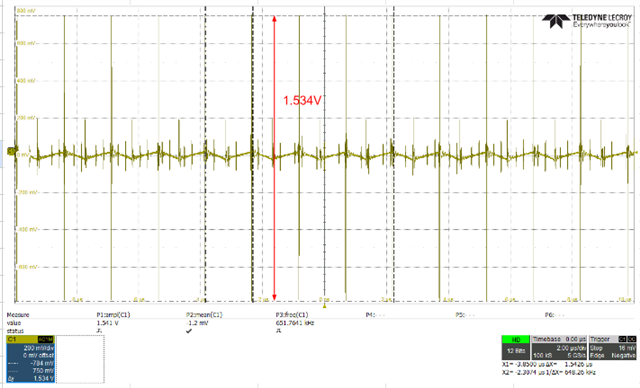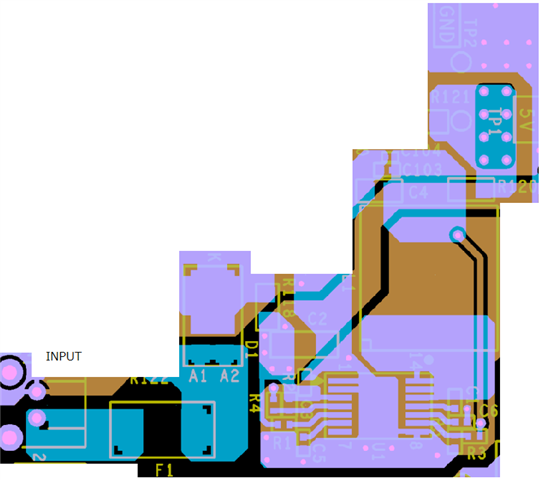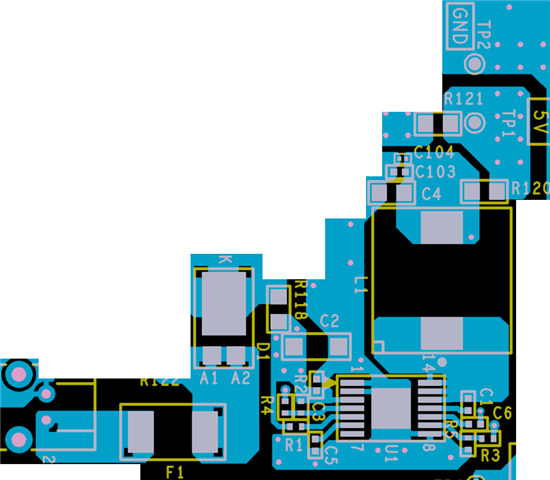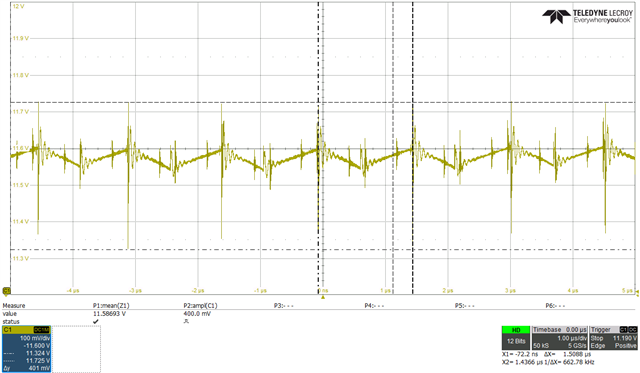Other Parts Discussed in Thread: SN6505B
Hi experts.
I calculated the input capacitor to be 3.3u and 0.1u using the formula in the data sheet,
but the spike noise on the input side is about 1.5V.
Installing a larger capacitor will reduce noise, but this is not practical due to space considerations.
I would like to receive advice on noise countermeasures, such as input capacitor selection, component placement, and GND routing in the case of a 4-layer board.







